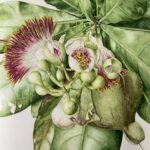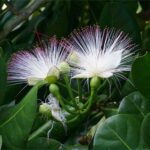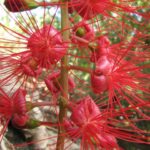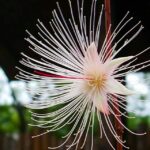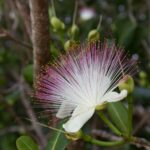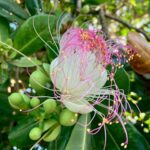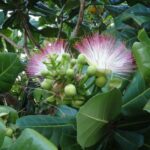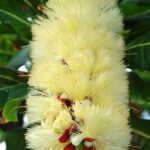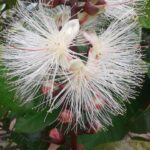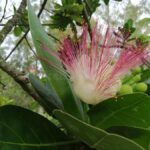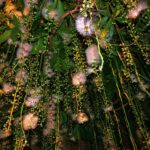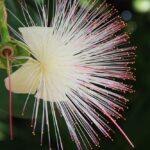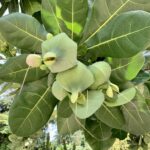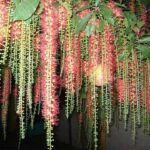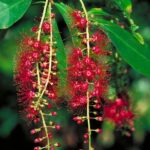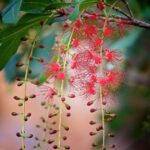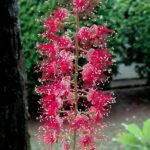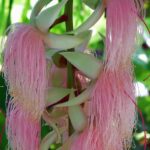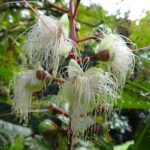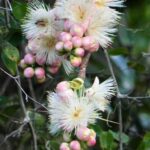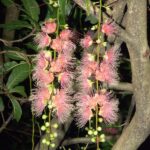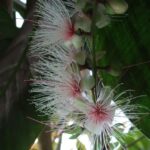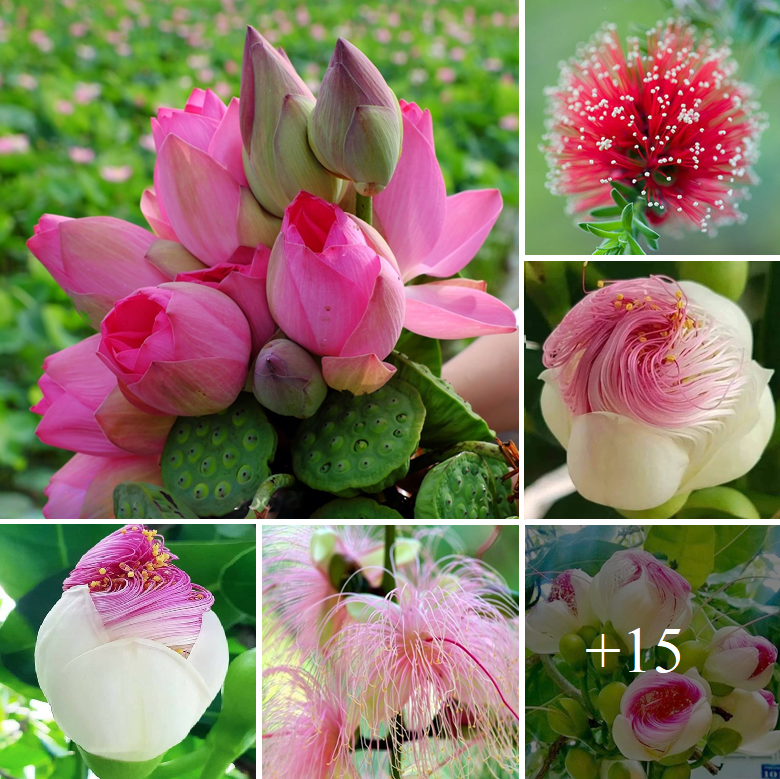
It is typically 10 to 15 m (30 to 50 ft) tall and develops a short trunk with a low-branching structure, supporting a densely branched wide-spreading crown. The leaves are large, club-shaped, glossy green, leathery and spirally arranged at the ends of the branches.
Barringtonia is a large salt-tolerant tree commonly associated with coastal areas and originates from the region extending from tropical Africa, through India, to Southeast Asia, Australia and the Pacific.
Blooms are on and off throughout the year, with large, white tulip-like flower buds. These open at night to reveal long white, pink-tipped filaments that, when fully extended, resemble a powder puff. Their heavy scent attracts nocturnal pollinators, including moths and nectar-feeding bats.
The flowers develop into four-sided woody fruit about the size of a juvenile coconut. Green when young, they become dull grey-brown and, like a coconut, will float and drift on the ocean until they land on new shores.
Use
It is a commonly cultivated tree in seaside gardens and landscapes for its showy flowers, foliage and shade against the midday sun, a feature especially appreciated by beachgoers. Its high tolerance to salt, tidal flooding and strong winds make it especially suited to sites on or near the shoreline, where it also serves as a natural windbreak against strong sea breezes.
The leaves, seed and bark have traditional use as a fish poison. When macerated and released into water, their poison acts to stun fish for easy capture.
Climate
Grows naturally in moderately humid to humid tropical coastal climates, generally areas with annual lows of 19 to 25°C, annual highs of 28 to 35°C, annual rainfall of 600 to 4500 mm and a dry season of 7 months or less, extending to drier areas with irrigation or groundwater.
Growing
New plants are usually grown from seed. It performs best on free-draining sand and loam soils of a slightly acid to alkaline nature, generally with a pH of 6.0 to 8.5 and on sites with full sun exposure. It has good tolerance to salt, wind, tidal flooding, and coral derived limestone soils.
Problem features
It tends to colonise remote coastal areas and is listed as a serious weed in at least one reference publication. However, it is assessed as a low weed risk for Hawaii by the Hawaii Pacific Weed Risk Assessment (HPWRA) project.
The flowers are short-lived, opening for one night only then lose their petals, which fall to the ground creating litter along with the fallen leaves. The fruit are highly poisonous.

